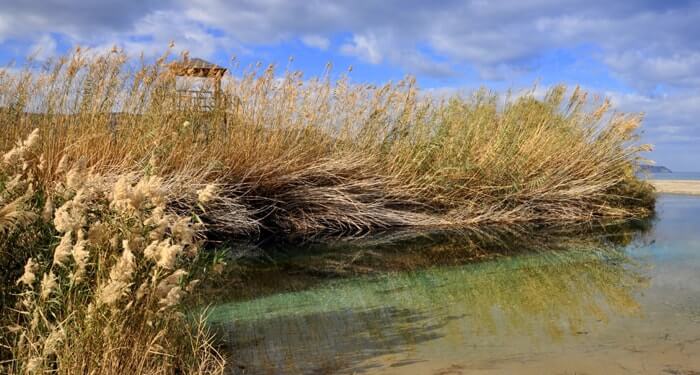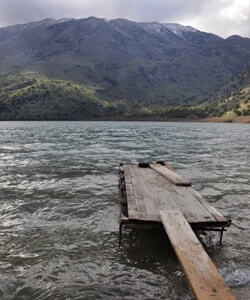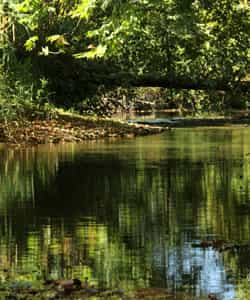Crete has limited water resources, due to its geographical location and weather conditions. Dams and artificial reservoirs have been built at several sites of the island in order to meet the increasing needs for water supply. After their construction, all of them soon were transformed into very important wetlands, enriching the biodiversity of the island.
The largest natural lake in Crete is located at Kournas near Georgioupolis, where visitors can watch birds from the local watch tower. Small but important natural ponds with water all year round are also located at Tersanas by Chania, at Mohos and Thrapsano while seasonal ponds are met at Orne, Parakalouri, Ziros, Omalos by Viannos, Achendrias, Stroumboulas, various plateaus of the northern province of Mirabello, Gergeri and at several more places. Artificial lakes where one can observe birds are located at Ayia by Chania, at Votomos by Zaros, at the large dams of Bramiana, Aposelemis, Faneromeni, Potami and the numerous small dams in the hinterland of Heraklion.
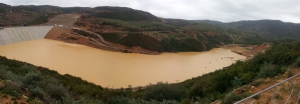
The dam of Valsamiotis is located near the village Vatolakos at Kissamos Province and has water capacity of 6 million cubic meters. It was inaugurated in 2014 and since then it has turned to one of the most important wetlands in West Crete.

The name means the lake of the Turk, taken after a legend according to which a Turk was drowned here. In order to reach the lake you should follow the dirt track from Ahendrias to Stiromandra. From Stiromandra follow the short path which is part of the old trail from Ahendrias to Agios Nikitas monastery.
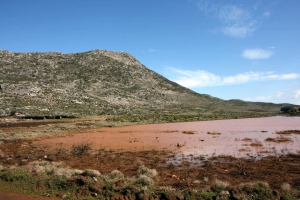
At the east sides of the volcano-like peak of Strouboulas (seen from Heraklion), you will meet the small plateau of Strouboulas. It is a typical limestone plateau with limited vegetation due to overgrazing, but it hides wild beauty. At one side, you will meet the chapel of Saint George and at its lowest place, a small pond is formed in the winter. This small unknown wetland is highly dependant on the rainfalls. The water is reddish due to the grounds that remind of African landscapes.
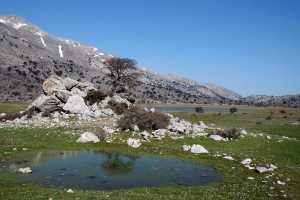
In Omalos there is nothing, except from the small chapel dedicated to the Holly Spirit. The plateau is only used by local shepherds during the summer months. On every winter the plateau is dressed in white, making the landscape very beautiful. When the snow melts in the center of the plateau a small lake is formed, which is still there till early summer.
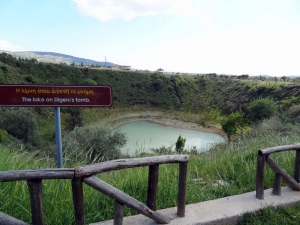
The lake at Digheni’s Tomb, adjacent to the artificial lake of Gergeri, is a special case of a seasonal wetland that has water in winter and dries up in the summer. The natural cavity where it is located has the form of an inverted cone. Although the swamp is isolated, it maintains populations of amphibians, tortoises and birds.
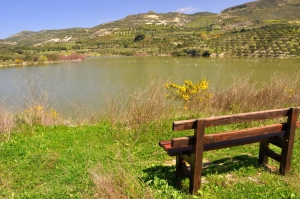
The dam of Partira is situated 32km south of the city of Heraklion and west of the village Partira at an altitude of 300m. Its construction was completed in 2000 and today the capacity reaches 380000 sq.m. of water. The dam gathers the water from Patsideros river, a tributary of Anapodaris river.
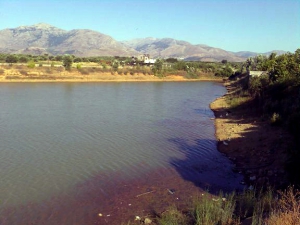
The pond of Livada is located at the homonym position 1km north of the village Thrapsano and is one of the favorite places for locals to walk. The small lake covers only 21.000 sq.m., but is an important wetland, where more than 130 species of birds have been met.
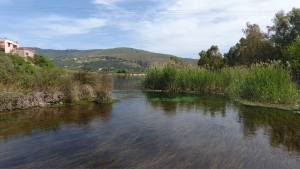
The lake and the river Almyros in the area of Georgioupolis form one of the most important wetlands of western Crete. In the lake, we find many aquatic birds and aquatic plants like reeds, myrtles, and oleanders. The lake is natural and is watered by the water of the White Mountains. The bank has been formed in order to assist in the operation of a small 300kW hydroelectric power station.






